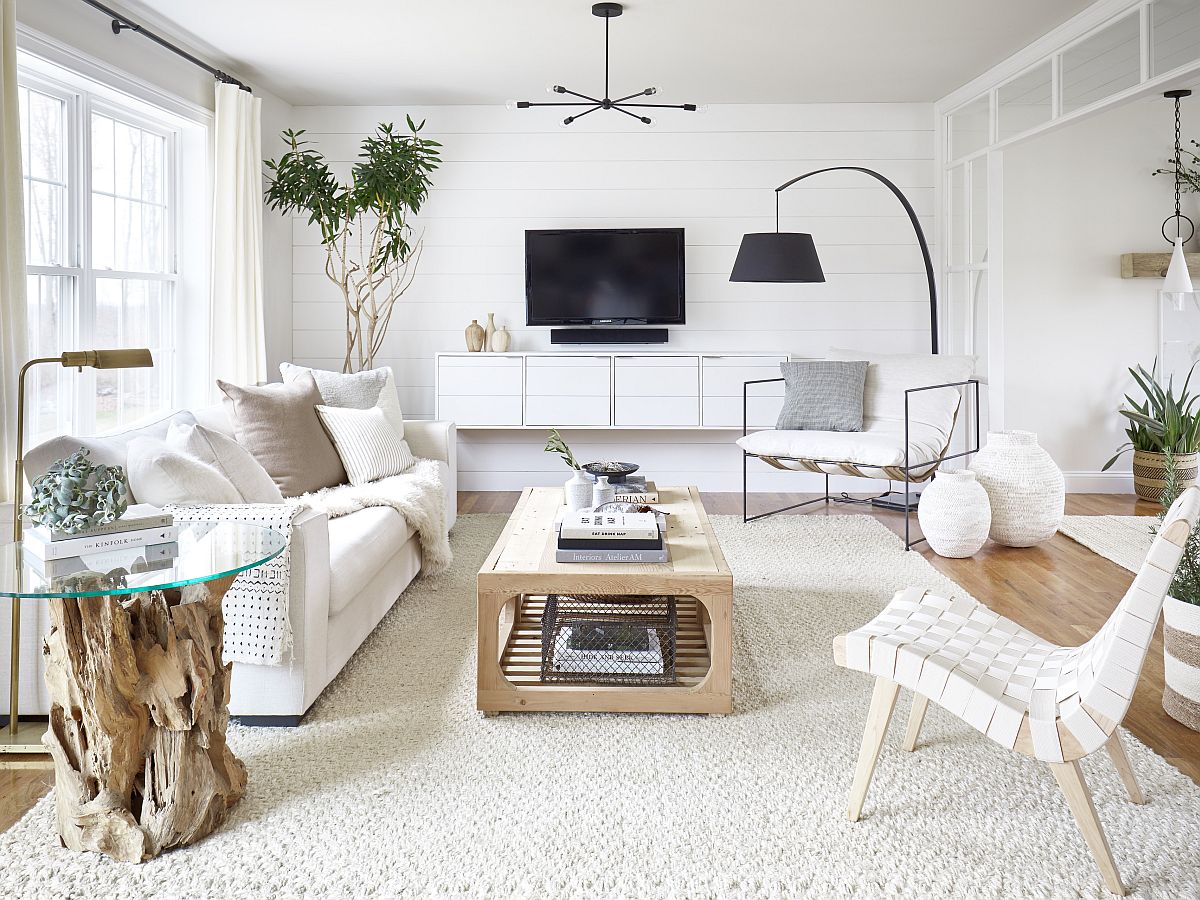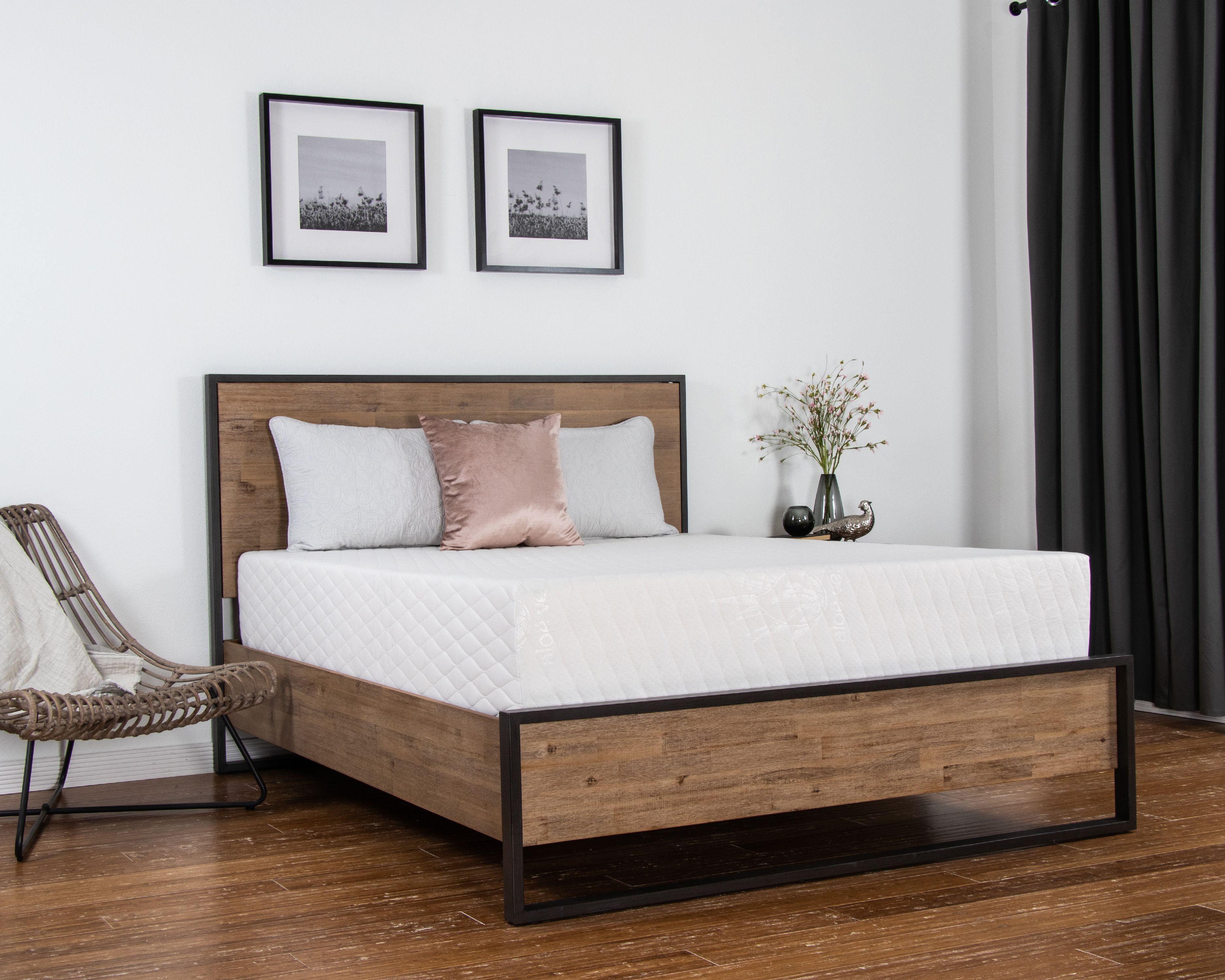Off-grid living is one of the most sustainable, attractive, and affordable ways to live in a modern society. By living off-grid, individuals can become more environmentally conscious. Furthermore, adopting a simpler lifestyle can reduce costs and promote A-list living. That’s why so many individuals are choosing to construct an off-grid house. One of the most important aspects associated with building an off-grid home is the design. One should consider building an off-grid home, develop a plan, and then research different design ideas before they begin their dream construction. Here are some tips on off-grid home design ideas in order to help you build your own off-grid home. Ideally, any off-grid home should generate its own electricity, water, and heat. Each of these essentials should come from renewable resources that are local and sustainable. To produce environmental-friendly energy, solar energy is a popular option. In addition, wind turbines, micro-hydropower, and biomass systems are also reliable sources of energy. It’s also important to remember a few essential tactics. To save as much energy as possible, it’s highly recommended that you insulate the building well and conserve hot water. Insulation and double-thick windows ensure that the interior remains warm in the long winter months. Further, water tanks and several pumps can be used to store and move water to the site. When it comes to off-grid home design ideas, there are plenty of potential approaches. Cottages, cabins, and earth shelters are popular designs that all have a rustic charm. When constructing a cabin, an individual should strive to maintain a level of simplicity. A contemporary design with a heritage theme is always eye-catching. For a truly off-grid experience, consider a model ecohouse or a yurt. These dwellings are often elevated above the ground and have a cozy interior. It’s also important to note that perspective and structure are important elements when it comes to light and space. And natural materials are essential when looking to build a sustainable off-grid home. When one is looking to build an off-grid home, they should also consider the convenience benefits that come from living off the grid. While off-grid living isn’t as common in many cities, the system is much more common in rural areas. To have the greatest advantage when living off-grid, the individual should be able to provide themselves with clean, renewable energy. Furthermore, lower electricity costs and a lifestyle that’s free from manipulation by energy providers should also be included in the advantages. Along with these benefits, living off the grid also allows the individual to create their own food sources.7 Off-Grid House Design Ideas and Benefits
The off grid option is becoming increasingly popular, and it can be an incredibly rewarding experience when done correctly. With the right off grid home design ideas and the right tips, it’s possible to create the perfect off grid living experience. Fortunately, there are many templates available that can help guide an individual when constructing an off grid home. Here, we provide a step-by-step guide on how to use these templates to build an incredible off-grid home. Before an individual begins the off grid home construction process, they must first obtain a building permit. The permit will vary according to the area and the type of home the individual is looking to build. Furthermore, the individual should ensure that the chosen design is approved by the local authorities. After obtaining the permit, the individual should then start to develop a design concept. This should include the basic layout of the home and the basic services such as plumbing and electricity. The individual should ensure that all the necessary items needed for the design are bought before the start of the construction. Once all the materials required for the build are in hand, the individual can begin constructing the shell of the house. The shell will be the framework that contains the entire house. This should include roofing, insulation, and the installation of a reliable ventilation system. It’s also important to ensure that the house is structurally sound and that it meets the local building codes. Once the construction of the shell is completed, the individual can begin the interior decoration. This will include the installation of wallpapers, carpets, and lighting fixtures. The individual should also ensure that all the other essential items like water tanks, solar panels, and power converters are added to the design. The individual should also add a few luxury items to make the home more livable. At this stage, the individual can finish up by furnishing the home. This includes the selection of furniture, painting the exterior, and adding landscaping to the outdoor areas. After the furnishing is completed, the home is now ready for the individual to live in happily and comfortably. Using the right off-grid home template and the correct tips, building an incredible off grid home is now possible.14 Incredible Off Grid Homes Template: A Step-by-Step Guide
For experienced off-gridders, or newly inspired individuals, the process of choosing the best off-grid home design ideas is no small feat. An off-grid home must meet the needs of the user now, while allowing for adjustments to accommodate any changing needs in the future. Therefore, it’s important to consider all the variables when selecting the best design. To help narrow down your options, here are four different off-grid home design ideas for you to consider. The first option is a mobile home. This type of design works best for those who plan to stay in one area for an extended period of time. These homes can be powered with solar and wind power, with backup storage of renewable energy collected through various sources. Additionally, mobile homes offer users greater flexibility if the location needs to be changed. This is a great design for those who enjoy the freedom of living off the grid in an area that offers a new experience each day. The micro-house design is the second option and typically works best for those living off-grid for the long haul. This home is basically a tiny house that uses every inch of space efficiently. These homes are great for those who are looking to go completely off the grid as they are often equipped with solar panels, water tanks, composting toilets, and other features for storing and using renewable energy. Micro-houses are known for their energy efficiency and the ability to build even with limited resources. The third yurt home is a great option for those who prefer a simpler dwelling. These homes are designed to be portable and provide a cozy, comfortable living space despite their small size. Often constructed out of natural materials, yurts are perfect for more adventurous off-grid living. Additionally, these homes can be set up anywhere and come with energy efficient features such as skylights and wind/solar power systems. Finally, the last design is the Earthship. If you’re looking for an off-grid home that blends in with the environment, this design is the ideal choice. Not only are these homes designed with the environment in mind, but Earthships are also self-sufficient. These homes are equipped with energy efficient features, as well as a greenhouse to harvest your own food and water sources, such as rainwater collection or even a well.4 Different Off-Grid Home Design Ideas
Building an off-grid home can provide individuals with many unique advantages. Not only can building an off-grid home help the environment, but it can also bring a sense of satisfaction to the individual living in it. Here are eight benefits of building an off-grid home. The first benefit of building an off-grid home is lower electricity costs. By tapping into renewable energy sources instead of relying on traditional energy sources, individuals can reduce their monthly bills tremendously. A well-designed off-grid home should produce enough power to keep the cost per watt significantly lower than grid-powered electricity. The second benefit of an off-grid home is the lifestyle. An off-grid lifestyle encourages individuals to think more about their choices and think about how their actions can affect the environment. Not only that, but off-grid living also forces individuals to spend more time outdoors, which can be a great way to connect with nature and build a strong connection to the earth. The third benefit is independence. Living off-grid means that individuals can be their own power providers, and depend on their own resources. This means that individuals don’t need to rely on the grid for power. This independence can be a great feeling for those who are looking to truly experience off-grid living. The fourth benefit is flexibility. An off-grid home can be designed and built to meet an individual’s needs. This means that the individual has the freedom to design the home to their exact specifications and adjust it to accommodate any changing needs in the future. The fifth benefit is that an off-grid home can be more affordable. By reducing the reliance on the grid, the individual can minimize the cost of constructing their home and the amount of energy they consume. This can be a great way to save money in the long run. The sixth benefit is that it can reduce the environmental impact. By using renewable energy sources, the individual is contributing to a more sustainable world. The seventh benefit is that it makes it easier to own property. In some cases, an individual may own the land they live on without owning the land the infrastructure is on. This can be especially beneficial for those who are looking to travel and explore new places. Finally, building an off-grid home can provide the individual with a feeling of accomplishment. Knowing that they have crafted something from the ground up that provides a higher quality of life can be rewarding.8 Benefits of Building an Off-Grid Home
Designing an off-grid home for luxury living can be a challenge, but there are plenty of strategies to create an attractive and comfortable off-grid home. Here are ten ideas to consider when designing an off-grid luxury home. The first idea is to maximize natural light in the home. By doing this, not only will the home be bright and inviting, but it requires less electricity during the day. This, in turn, reduces the strain on the grid and the amount of energy the home needs to generate. Skylights and large windows are a great way to take advantage of natural illumination. The second idea is to incorporate renewable energy sources into the home. Renewable energy sources such as solar and wind can help provide an off-grid home with the power it needs. By utilizing these natural energy sources, the home can have all the luxuries of a conventional home without having to worry about the traditional energy sources. The third idea is to install efficient insulation. An efficient insulation system can help keep the home warm in the winter and cool in the summer. This helps reduce the amount of energy needed to heat or cool the home and saves money on energy bills over the long run. The fourth idea is to opt for minimalistic design. By adding fewer and simpler luxury items, the home can be enjoyed without overloading it with items that add little to no value to the overall design. Minimalist design also eliminates the need for decoration items and other unnecessary items that can make the home feel crowded and cluttered. The fifth idea is to use sustainable materials when constructing the home. Sustainable materials that are environmentally friendly can provide the home with a unique style that’s friendly with the environment. Furthermore, these materials can also be used to add personality and texture to the home. The sixth idea is to build green spaces in and around the home. This can help add a sense of tranquility and connection with nature to the home. Additionally, green spaces can provide a place to grow food, or an area to relax and take in the natural beauty of the surroundings. The seventh idea is to install water-saving devices. By installing water-saving devices such as low-flow toilets, faucets, and showerheads, the home can reduce its water consumption and help keep the environment clean and healthy. The eighth idea is to add outdoor living areas. Outdoor living areas can provide the perfect place to host gatherings, and to relax and enjoy the beauty of the nature surrounding the home. This can be a great way to connect with nature and make the home more inviting. The ninth idea is to opt for quality over quantity. By investing in quality items for the home, the home will be able to stand the test of time and provide luxury for years to come. Furthermore, quality items tend to use fewer resources to manufacture and are made with eco-friendly materials. Finally, the tenth idea is to conserve energy. This can be done in various ways such as updating household appliances, LED lighting, and providing adequate insulation. Conserving energy is important to ensure the longevity of the home and to reduce the reliance on traditional energy sources.10 Ideas for Off-Grid Luxury Home Designs
10 Off-Grid House Ideas (DIY & Prefab)
Harnessing Natural Resources for an Off-Grid House Design
 An off-grid house design relies on alternative energy sources rather than electrical grids and other traditional power sources for electricity and various essential utilities such as heat. Such an eco-friendly house requires an efficient design that uses natural resources like the sun, wind and water and efficiently meets a family's basic needs. It should also have the potential to expand and incorporate other green energy strategies as necessary.
An off-grid house design relies on alternative energy sources rather than electrical grids and other traditional power sources for electricity and various essential utilities such as heat. Such an eco-friendly house requires an efficient design that uses natural resources like the sun, wind and water and efficiently meets a family's basic needs. It should also have the potential to expand and incorporate other green energy strategies as necessary.
Maximizing Sunlight
 An off-grid house design should be constructed to take full advantage of the sun. Design elements like roof pitch and the placement of windows should be considered to maximize the use of solar heat. Additionally, the orientation of the house should be taken into account to maximize the amount of sunlight available.
An off-grid house design should be constructed to take full advantage of the sun. Design elements like roof pitch and the placement of windows should be considered to maximize the use of solar heat. Additionally, the orientation of the house should be taken into account to maximize the amount of sunlight available.
Incorporating Wind Energy
 Wind power is a great way to generate electricity for an off-grid home. Wind turbines can be installed on the property, either free-standing or as a part of the house structure. Depending on the geographic location, the required turbine size and placement can vary.
Wind power is a great way to generate electricity for an off-grid home. Wind turbines can be installed on the property, either free-standing or as a part of the house structure. Depending on the geographic location, the required turbine size and placement can vary.
Harnessing Water Power
 Water power can be generated with the use of hydroelectric turbines installed on-site. This provides power for electrical needs, such as lighting and appliances, as well as a source of energy for heating and cooling. The type and size of the turbine needed might vary depending on the site's water source, including factors such as water flow and pressure.
Water power can be generated with the use of hydroelectric turbines installed on-site. This provides power for electrical needs, such as lighting and appliances, as well as a source of energy for heating and cooling. The type and size of the turbine needed might vary depending on the site's water source, including factors such as water flow and pressure.
Utilizing Renewable Energy Sources
 Renewable energy sources, such as solar, wind, and water power, can be incorporated into the design of the off-grid house. The house's design should take into account factors such as sun exposure, wind patterns, and water availability. Once incorporated into the design of the house, these renewable energy sources can provide reliable and efficient electricity and heat for the entire home.
Renewable energy sources, such as solar, wind, and water power, can be incorporated into the design of the off-grid house. The house's design should take into account factors such as sun exposure, wind patterns, and water availability. Once incorporated into the design of the house, these renewable energy sources can provide reliable and efficient electricity and heat for the entire home.
Achieving an Eco-Friendly House Design
 Constructing a home can have a significant impact on the environment, and an off-grid house design can help reduce the burden on the environment. The house's design should incorporate materials and techniques that reduce the energy needed for heating and cooling, such as insulation and shading from the sun.
The construction of a sustainable off-grid house requires creativity as well as careful consideration of the elements of the house design that will make it efficient, effective and maintainable. By utilizing the natural resources available, it can be feasible to construct an off-grid house that is both eco-friendly and cost efficient.
Constructing a home can have a significant impact on the environment, and an off-grid house design can help reduce the burden on the environment. The house's design should incorporate materials and techniques that reduce the energy needed for heating and cooling, such as insulation and shading from the sun.
The construction of a sustainable off-grid house requires creativity as well as careful consideration of the elements of the house design that will make it efficient, effective and maintainable. By utilizing the natural resources available, it can be feasible to construct an off-grid house that is both eco-friendly and cost efficient.


































































:max_bytes(150000):strip_icc()/green-bathroom-ideas-4149804-hero-c2517cd10cfd45078158eb28081ad4fd.jpg)


